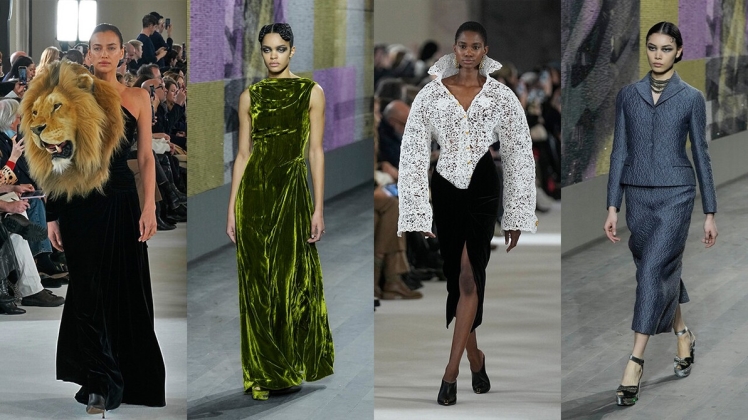In the realm of fashion, the term “couture” transcends mere clothing; it embodies an art form, a meticulous craft that intertwines creativity, innovation, and skilled craftsmanship. The Couture Chronicles delve into the fascinating world where the traditional meets the avant-garde, and designers transform fabrics into canvases, stitching narratives that mirror the zeitgeist of our times. This article explores the artistry of modern couture, delving into the evolution of this centuries-old craft and its intersection with contemporary fashion.
The Historical Tapestry of Couture:
The roots of couture trace back to 19th-century Paris when the likes of Charles Frederick Worth established the first haute couture house. Haute couture, translating to “high sewing” in French, was initially a term used to describe custom-fitted clothing. Over time, it evolved into a symbol of exclusivity, craftsmanship, and artistry, with designers crafting one-of-a-kind pieces for elite clientele.
Couture has always been synonymous with craftsmanship and attention to detail. Each garment is a testament to the designer’s dedication to perfection, as they work with the finest fabrics, employ intricate techniques, and ensure a flawless fit. The garments tell stories of elegance, luxury, and individuality, showcasing the union of art and fashion.
Modern Couture: Breaking Boundaries and Embracing Innovation:
While the essence of couture remains rooted in tradition, modern couturiers have embraced innovation, pushing the boundaries of what is possible in the realm of fashion. Technology has become a powerful tool, influencing the design process, enhancing craftsmanship, and providing new avenues for creative expression.
3D printing, for example, has revolutionized the way designers approach garment construction. Designers can now experiment with intricate structures and patterns that were once unimaginable. The intersection of technology and couture has given rise to avant-garde designs that seamlessly blend traditional craftsmanship with futuristic aesthetics.
Sustainability and Ethical Couture:
The evolution of modern couture is not only marked by technological advancements but also by a growing consciousness of sustainability and ethics. In a world increasingly aware of the environmental impact of fashion, couturiers are reimagining their practices to align with ethical standards. Sustainable fabrics, eco-friendly production methods, and a commitment to fair labor practices are becoming integral to the couture narrative.
Designers are incorporating upcycled materials, repurposing vintage fabrics, and adopting zero-waste techniques to minimize the ecological footprint of their creations. The embrace of sustainable practices not only reflects a commitment to environmental responsibility but also resonates with a discerning clientele seeking fashion with a conscience.
Couture and Cultural Diversity:
Modern couture serves as a canvas for cultural expression, celebrating diversity and challenging conventional notions of beauty. Designers are drawing inspiration from their own heritage, infusing their creations with elements of cultural richness. The runway has become a platform for narratives that explore identity, inclusivity, and the beauty of different cultural aesthetics.
Couture collections are increasingly featuring diverse models, breaking away from the homogenized standards that dominated the fashion industry for decades. Designers are weaving stories that reflect the myriad influences shaping our globalized world, acknowledging that beauty knows no singular definition.
The Rise of Couture in Streetwear and Everyday Fashion:
Traditionally associated with opulent gowns and bespoke suits, couture has found a surprising ally in streetwear and everyday fashion. Designers are blurring the lines between high and low fashion, creating couture-inspired pieces that are accessible to a broader audience. Streetwear brands are collaborating with couturiers, bringing a touch of luxury to casual, everyday attire.
This democratization of couture is facilitated by the rise of ready-to-wear collections and collaborations between high-end designers and mass-market brands. It reflects a shift in consumer preferences, as individuals seek unique, statement pieces that resonate with the artistry of couture, even in their everyday wardrobe.
The Fashion Show Spectacle:
Fashion shows remain the grand stage where couturiers unveil their masterpieces to the world. These events have transformed into spectacular performances, blending fashion, art, and entertainment. Designers collaborate with set designers, music directors, and even filmmakers to create immersive experiences that transcend the traditional runway format.
Social media has played a pivotal role in democratizing access to these fashion spectacles. Livestreams, behind-the-scenes content, and instant sharing on platforms like Instagram allow fashion enthusiasts from around the world to partake in the couture extravaganza. The fusion of technology and fashion shows has amplified the reach and impact of couture, turning each collection into a global cultural moment.
Conclusion:
The Couture Chronicles weave a narrative of a timeless craft that evolves with the times. Modern couture is a testament to the resilience of tradition and the adaptability of artistry. From the opulent gowns of the 19th century to the sustainable, tech-infused creations of today, couture continues to captivate, inspire, and redefine the boundaries of fashion. In a world where trends come and go, couture stands as a beacon of enduring craftsmanship, a celebration of individuality, and a canvas for the ever-evolving artistry of modern fashion.

